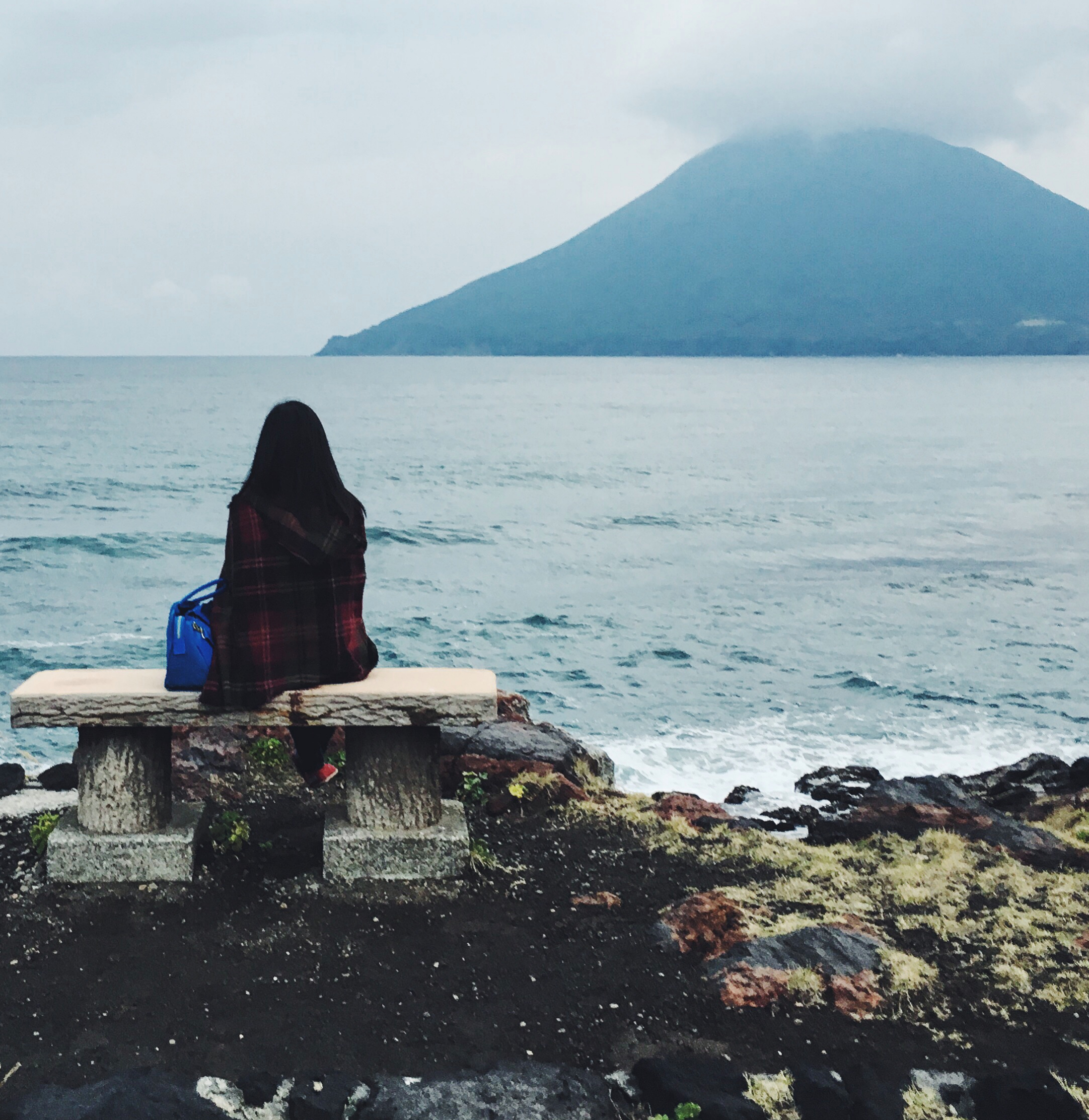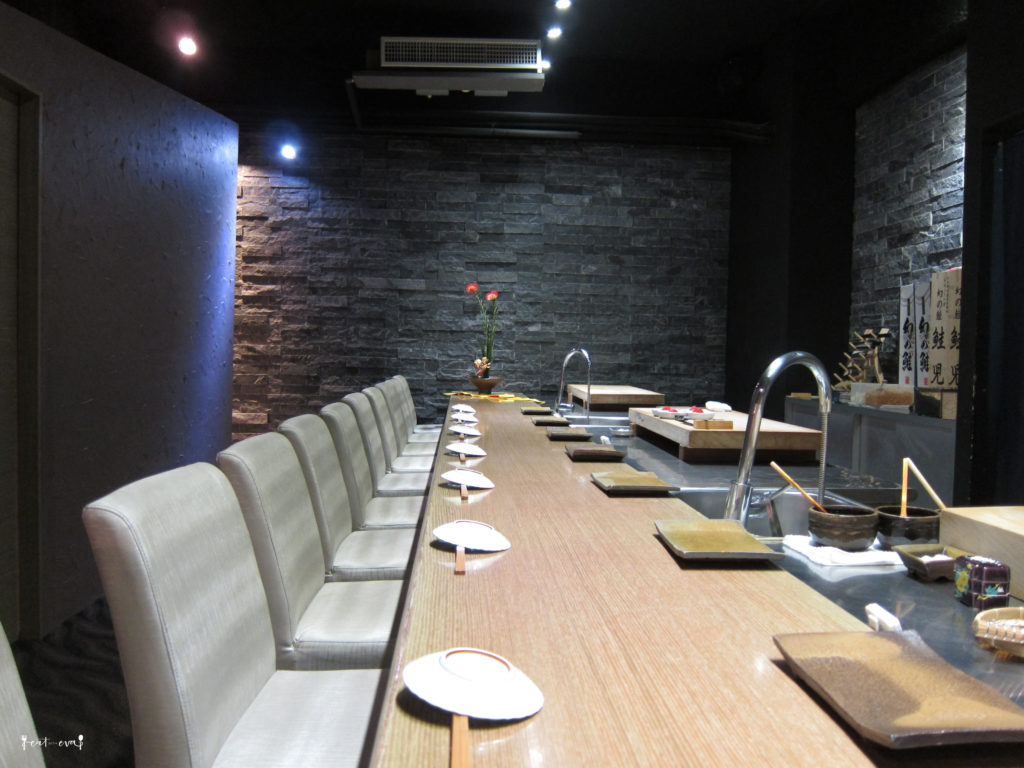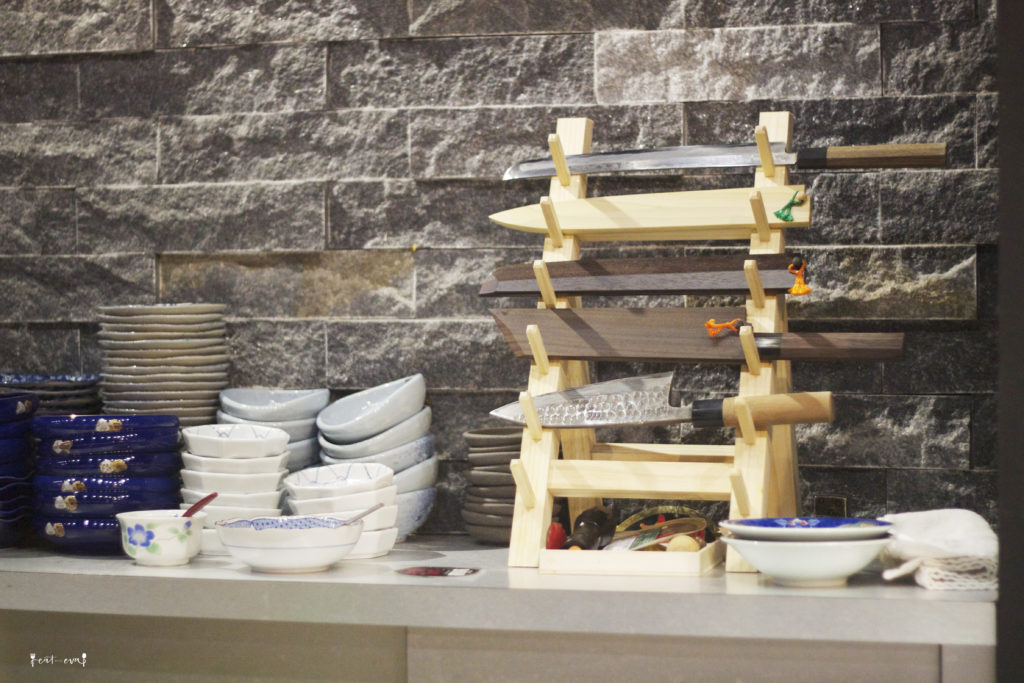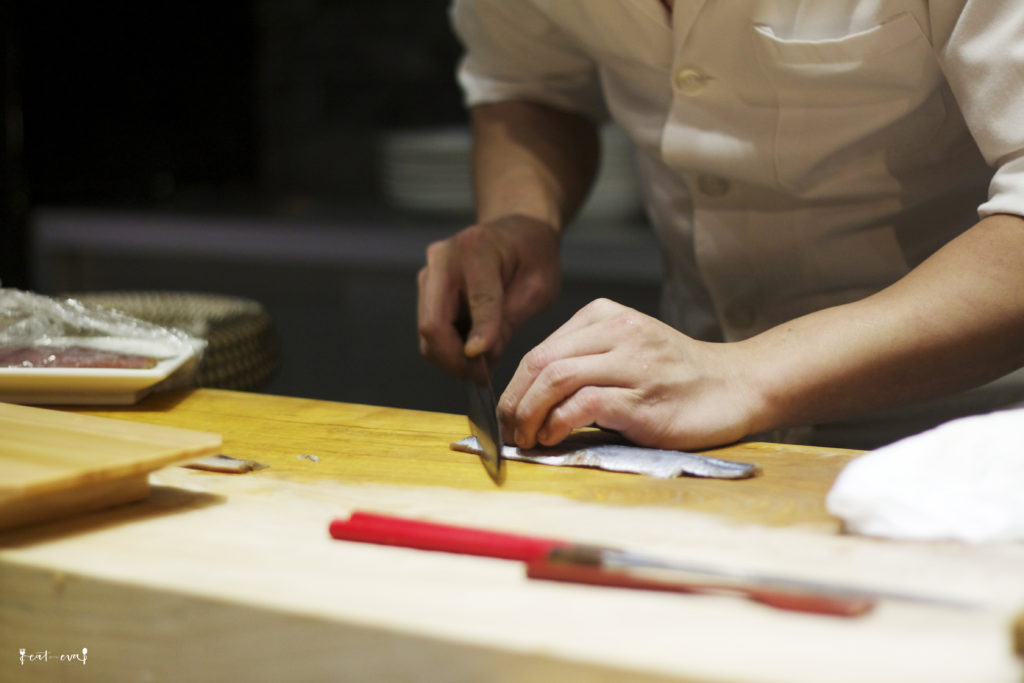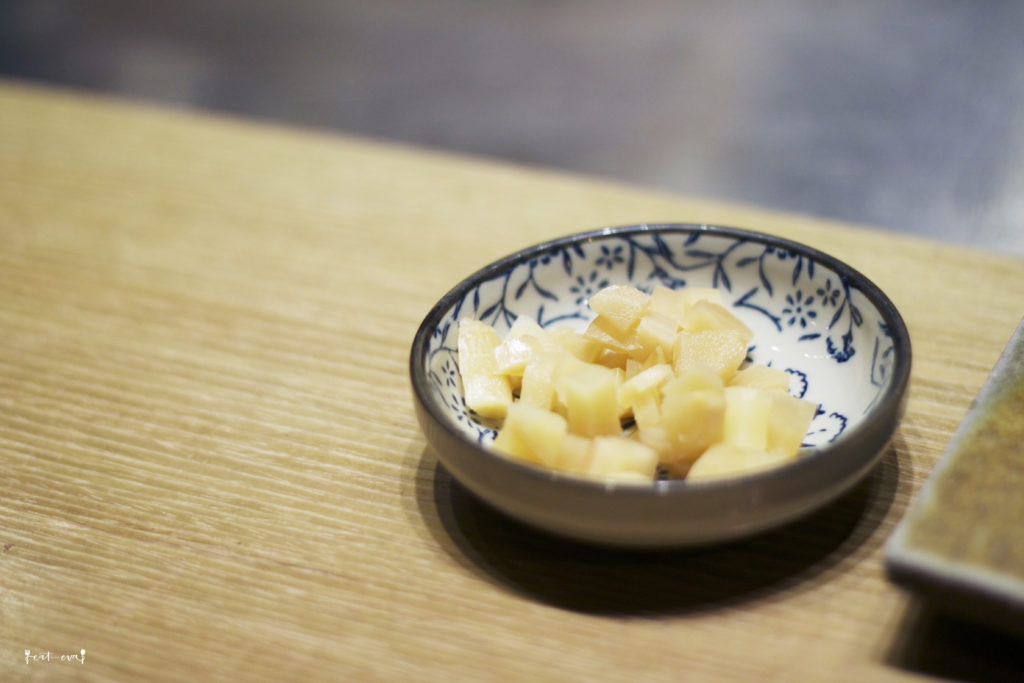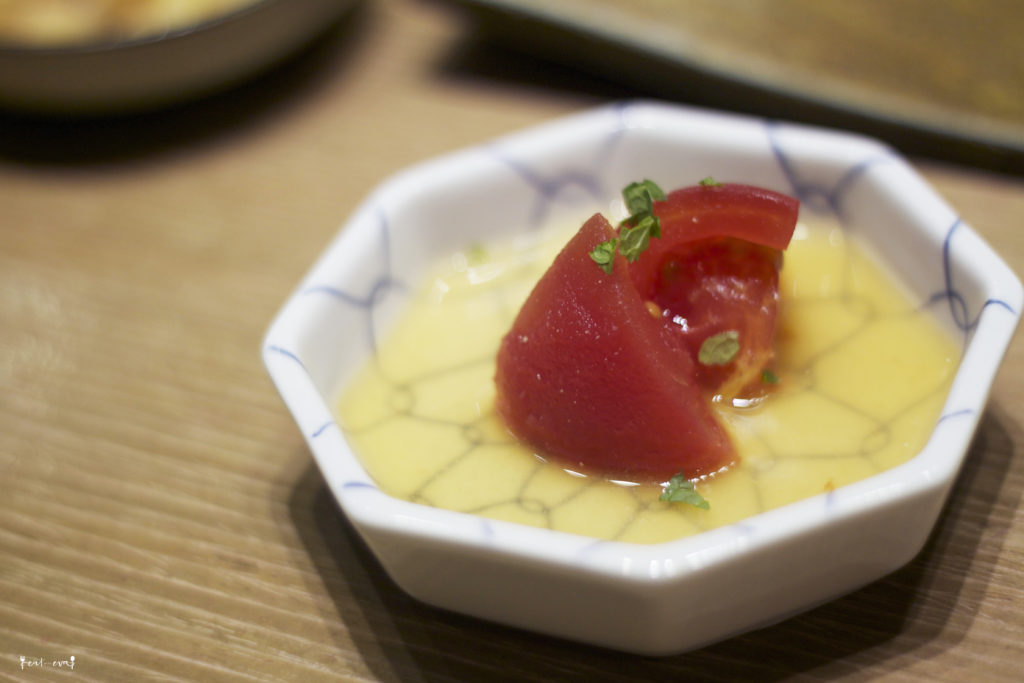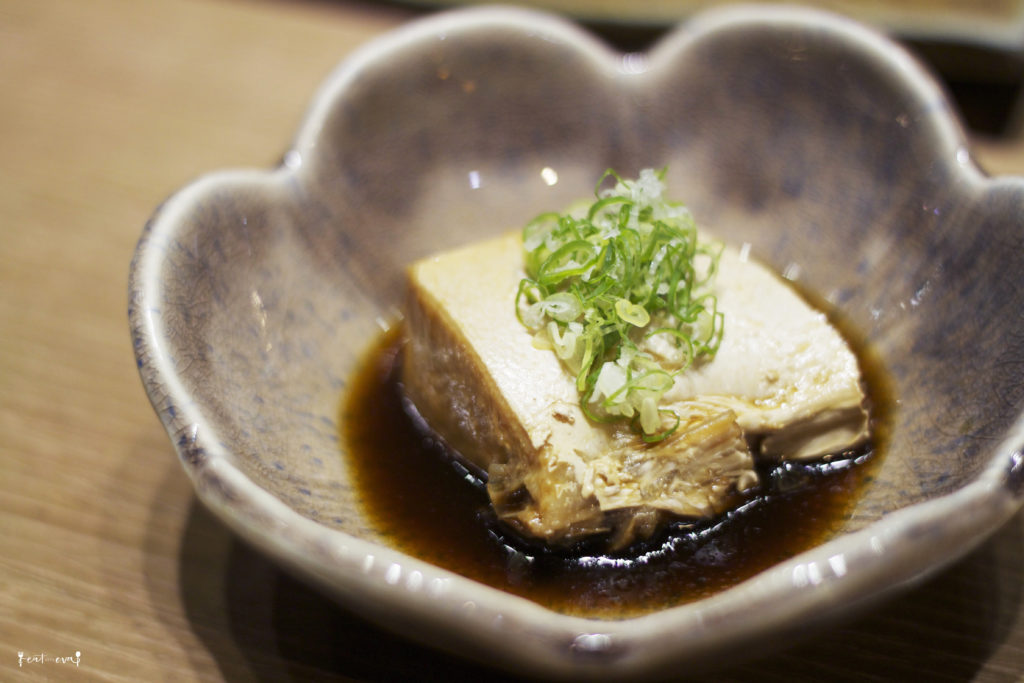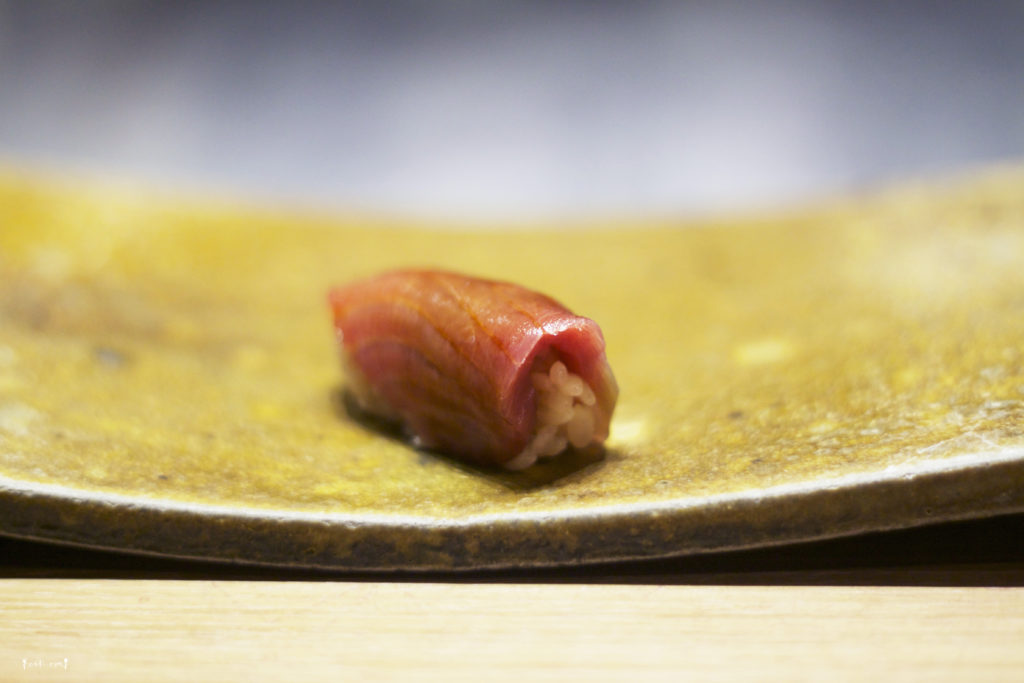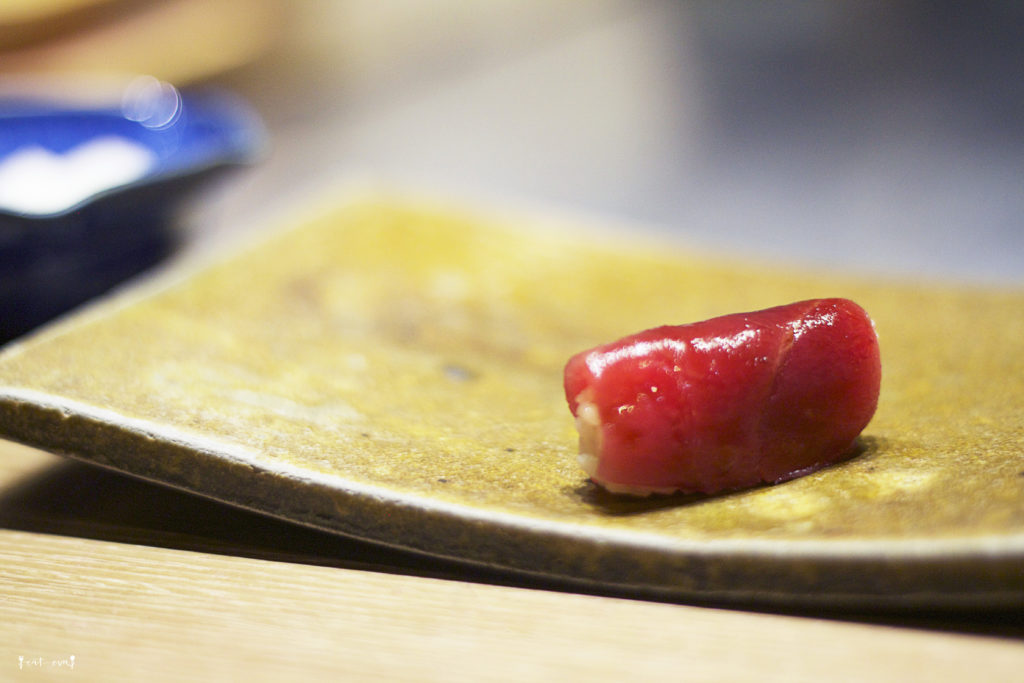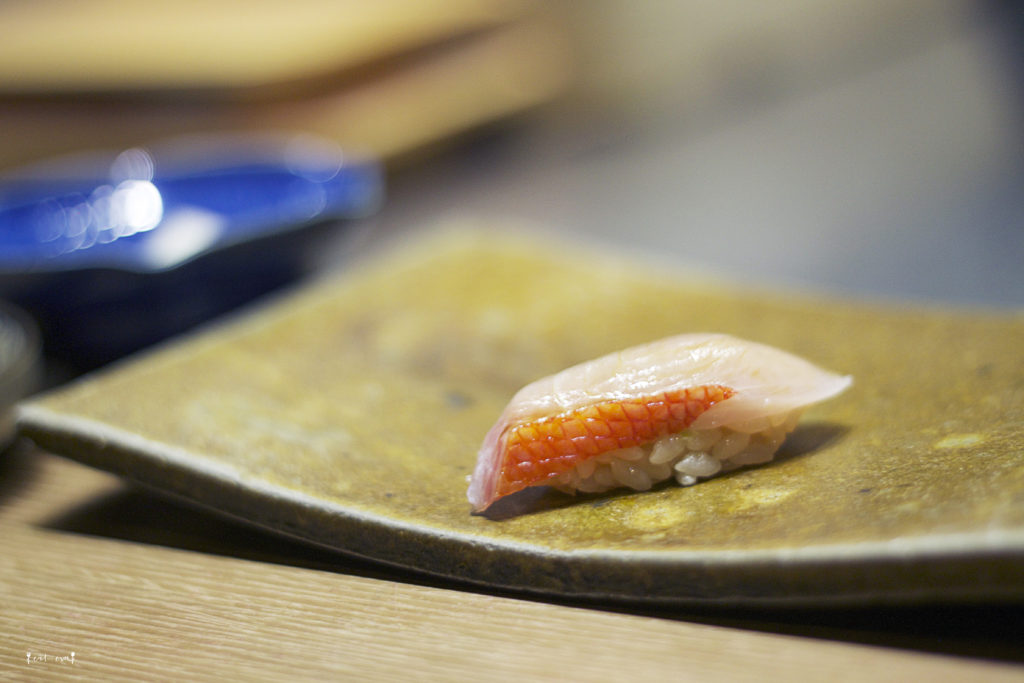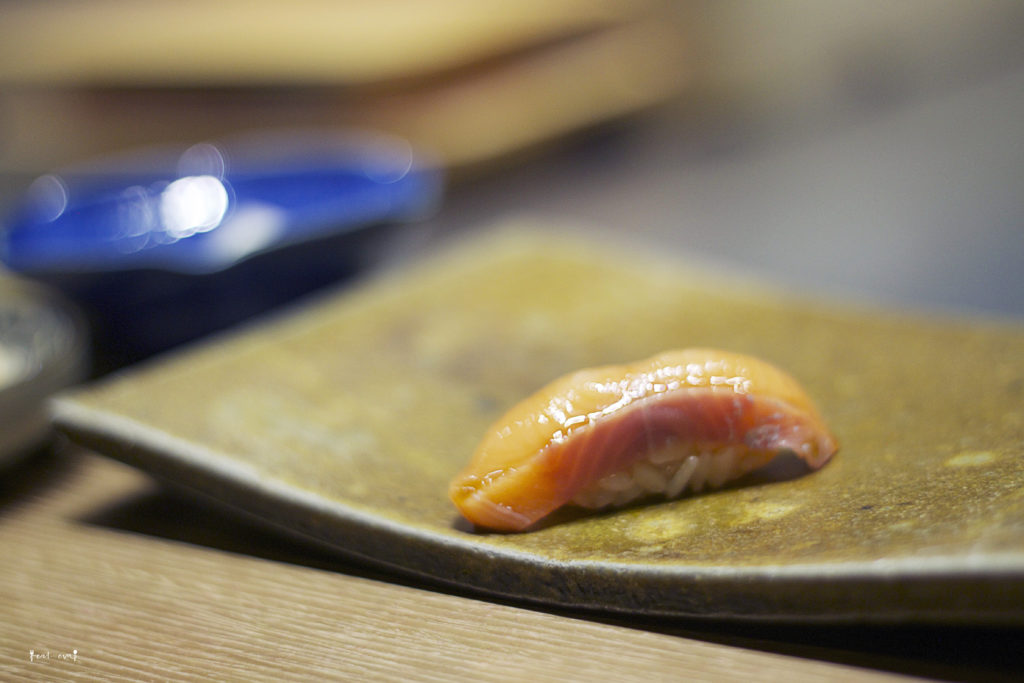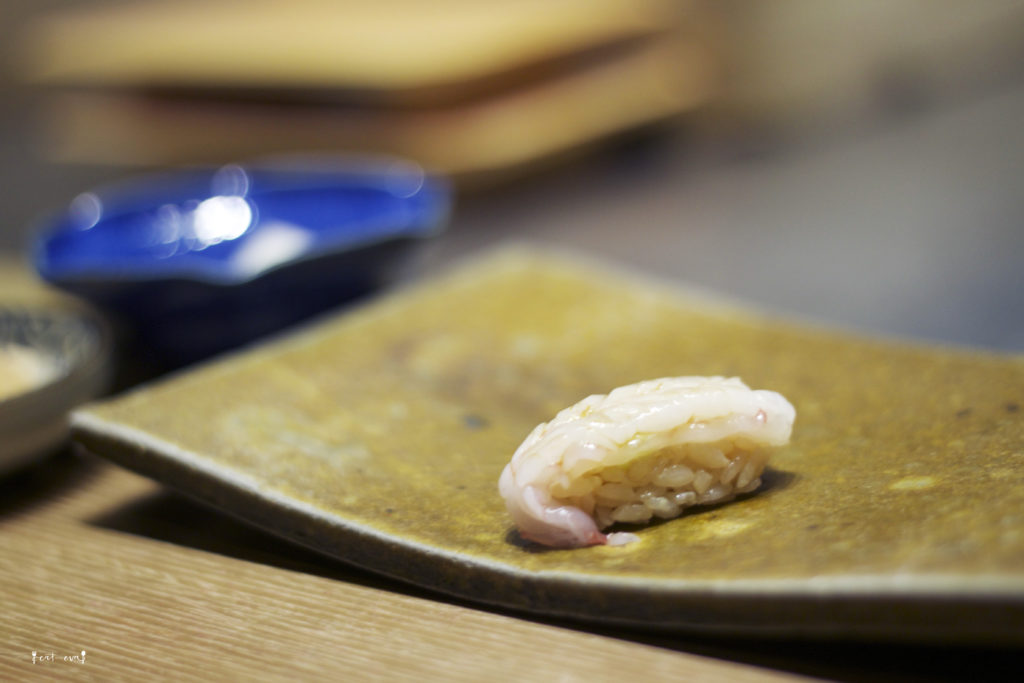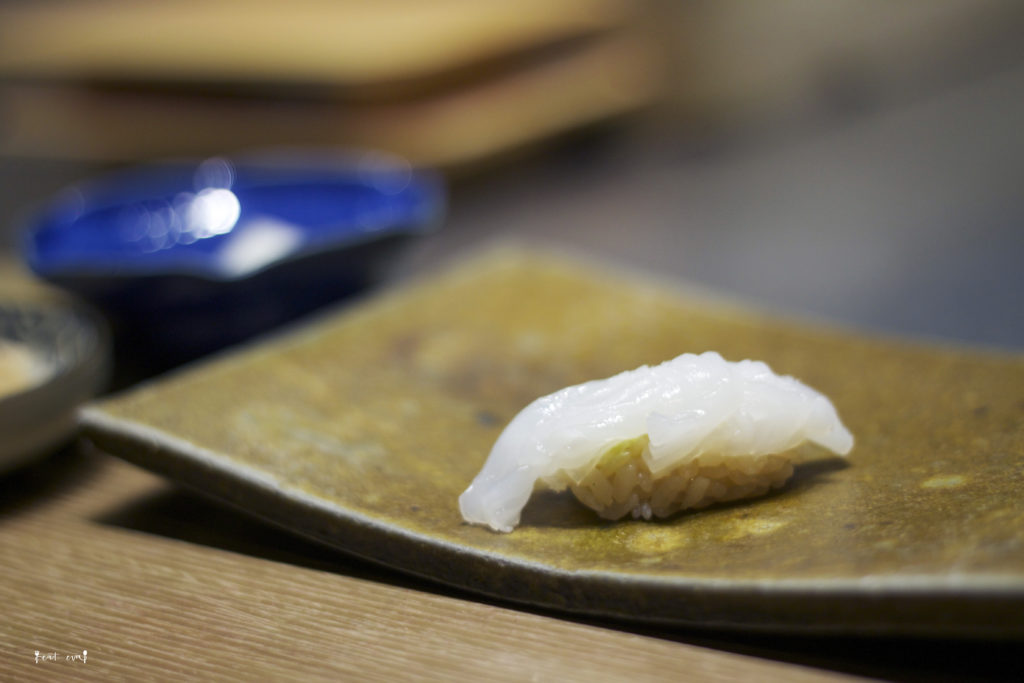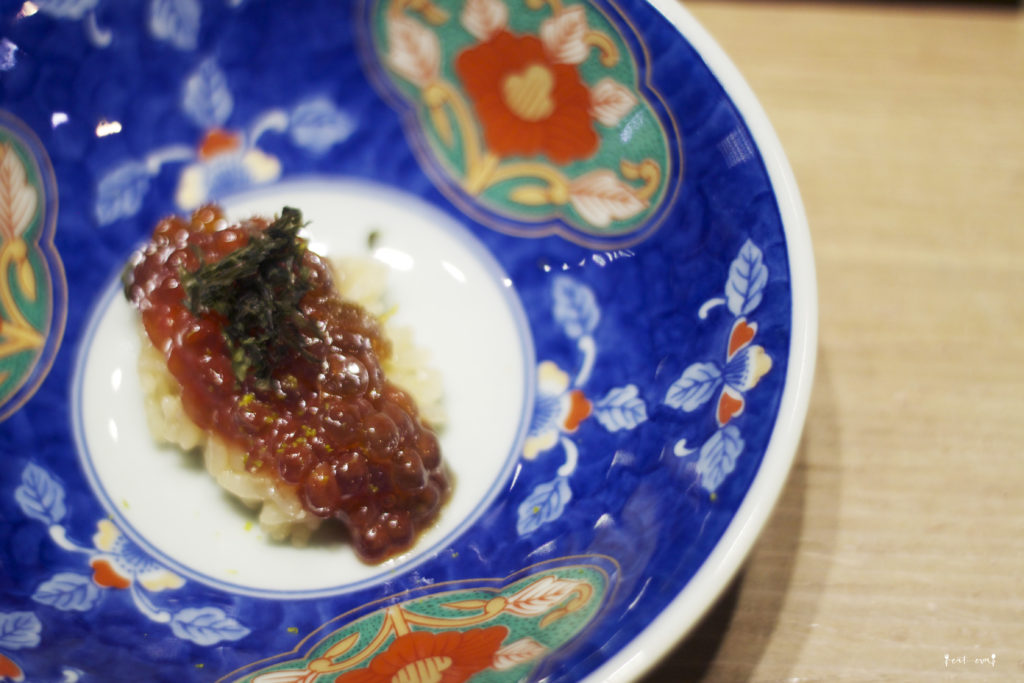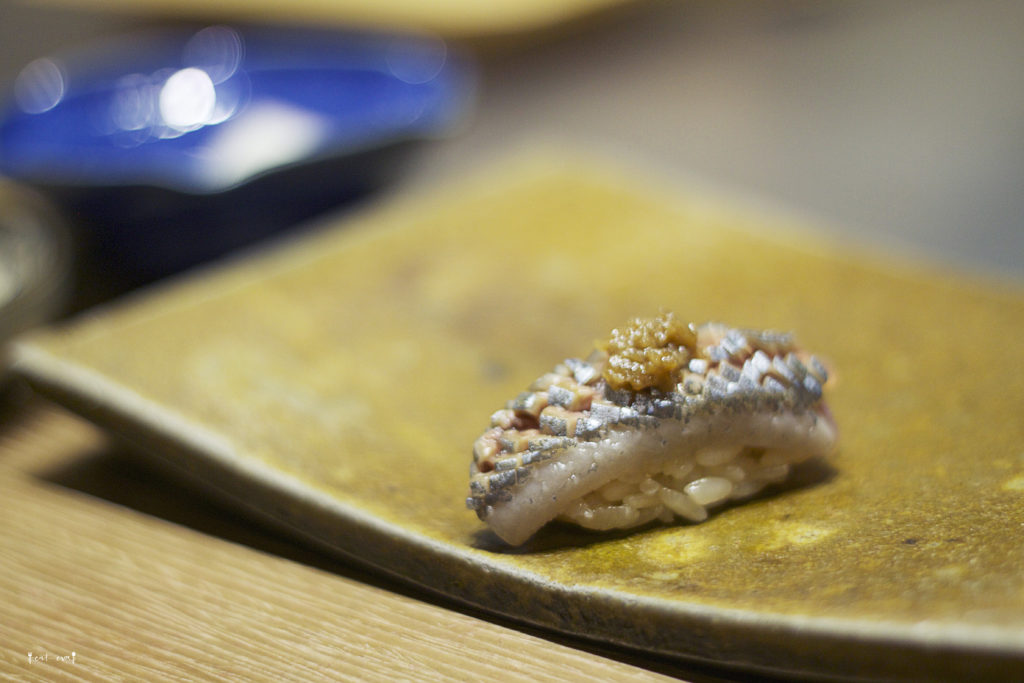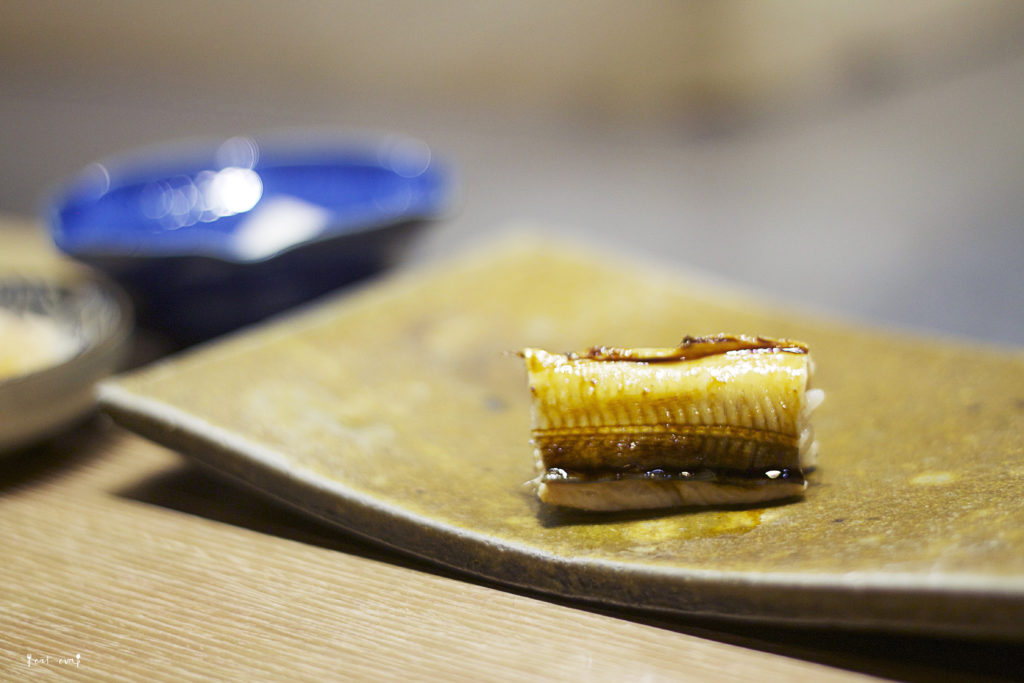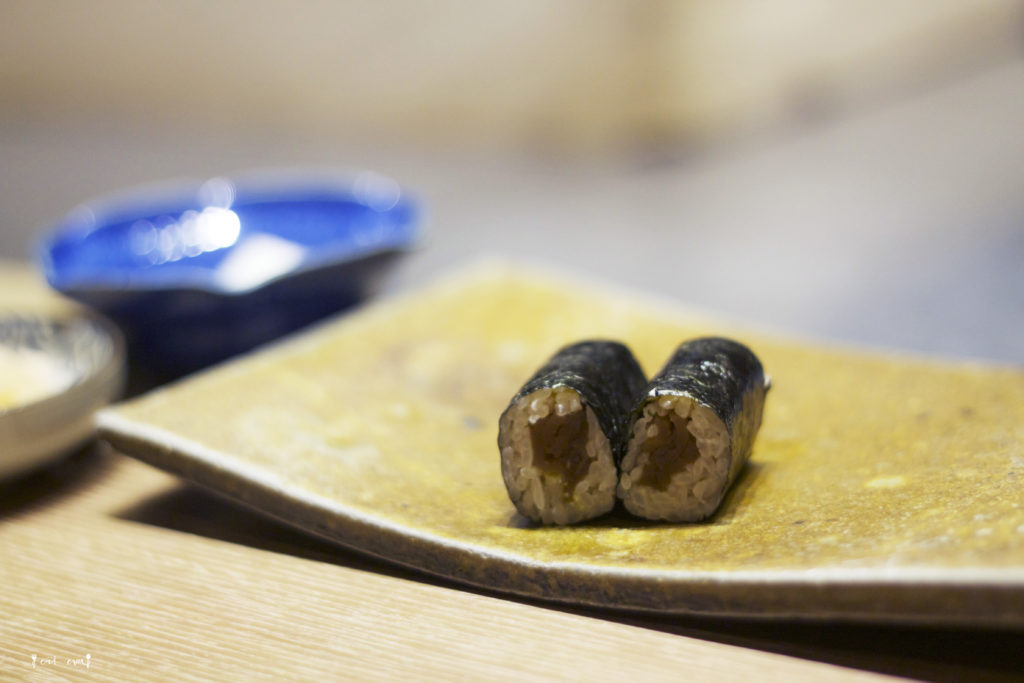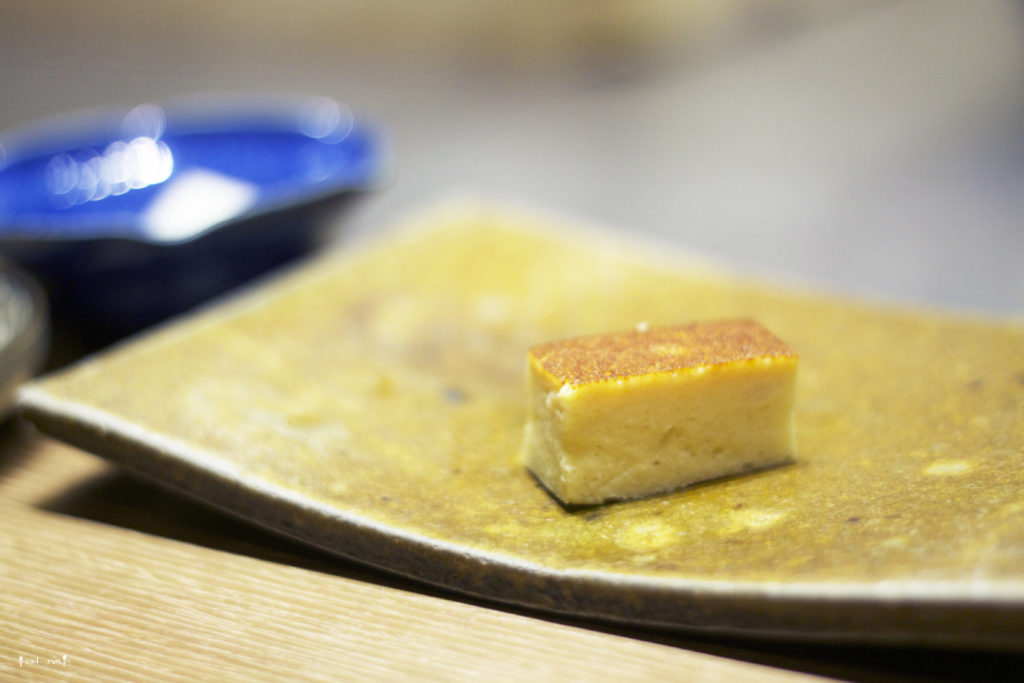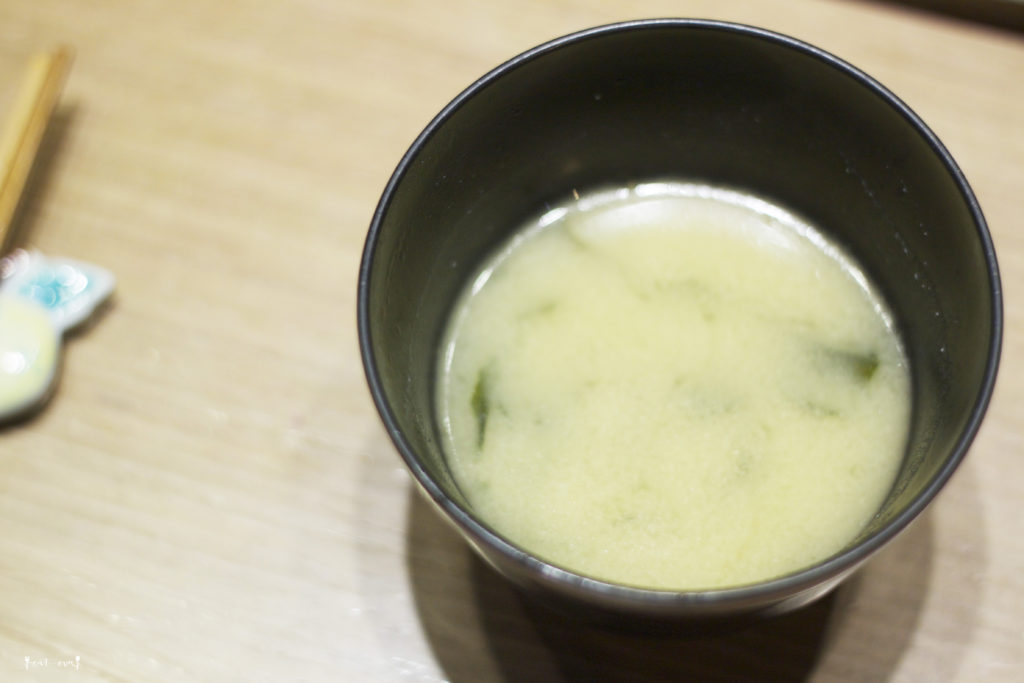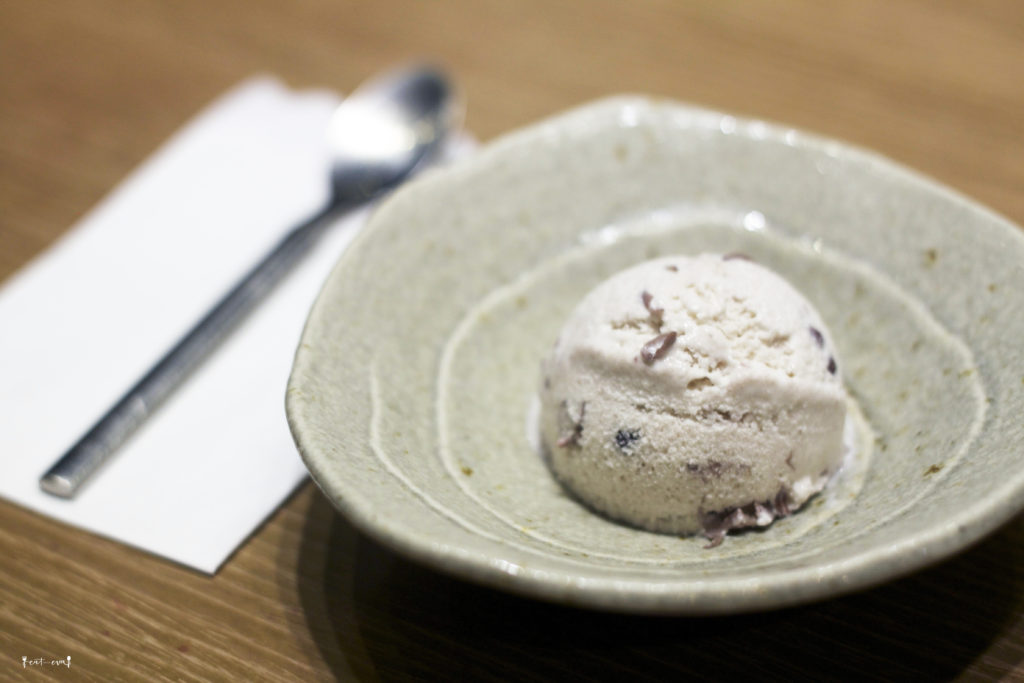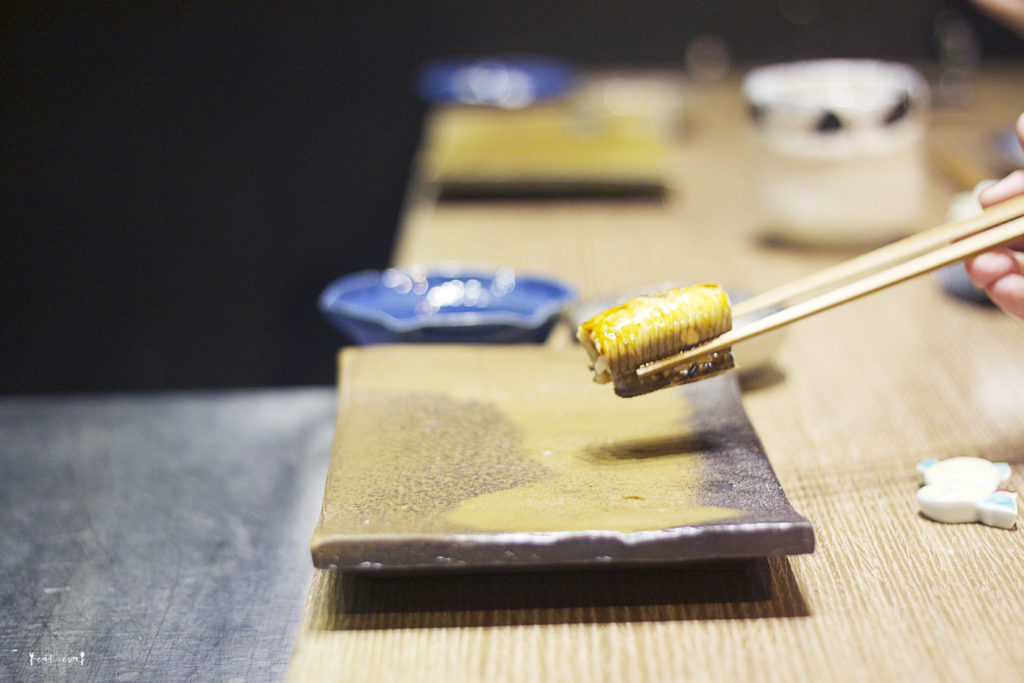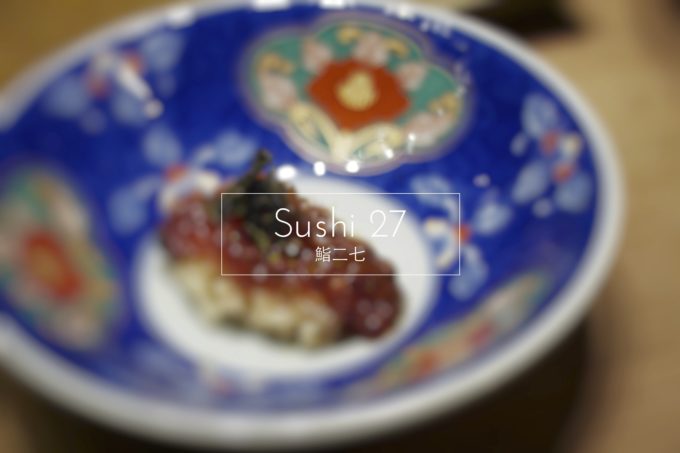
My love for Japanese food isn’t really a secret anymore. It all dated back to when I was 3 or 4 year-old. My grandfather had to get a box of chirashi everyday after work, and I would always get a small box of Japanese pickled cucumbers. Anyhow, as I’m older, my discovery for finer Japanese food continues, and I know that I’ll never get sick of it. I am extremely content that I have found Sushi 27, and it’s now a regular spot.
Sushi 27 specializes in the sushi from the Edo era (early 19th century). What does it mean? It’s a more traditional way of preserving and serving the fresh seafood catches. The seafoods are preserved in wooden boxes, and organized neatly.
The menu is based on the seafood that the chef gets, and it’s served in omakase-style – My favorite way of enjoying Japanese food, as I’ve previously written my first omakase experience, and omakase in Montreal.
As soon as we were seated, the waitress brought up the hot tea and pickled ginger. The ginger is for clearing your palette in between each nigiri, so you can taste the original flavor of the fish.
The first plate that came up was marinated tomatoes. I would consider this as an amuse-bouchee. The tomatoes were sweet, and with a bit of plum flavor. It was quite appetizing as my mom would always say that dried salted plums would open your appetite.
Poached Japanese amberjack or also known as the yellowtail. It was absolutely delicious that I wish I can have it on my dinner table every night. The fish is very tender but firm. I got the belly part, so it was quite fatty, which made the meat even smoother.
Ōma chu-toro nigiri – Ōma is a small town in the Shimokita District, which is north of Japan, close to Hokkaido, and a town known for tuna. The toro has been aged for 15 days. Chu-toro is a good start, because it’s the mid-belly part that has equal distribution of fat and lean meat. It was so soft, and not too fatty.
Akami nigiri – It’s the leaner part of tuna, from the back. It’s the leanest part of the fish, and very rich in iron. Since it’s the lean part of the fish, the meat is firmer, and more springy.
Alfonsino (aka red snapper) nigiri – This alfonsino came from Shizuoka province, which is located around Central Japan. It was seasoned with kumquat. The fragrance was really nice, and with a bit of acidity in the beginning, but ended on the sweet note.
Biwa Trout nigiri – This is from Shiga province. Loved the fattiness of this piece of fish.
Amaebi nigiri – The shrimp comes from the Toyama province, in the northern Japan. It was soft yet crisp, very delicate.
Cuttlefish nigiri – This extremely soft cuttlefish is sourced locally from Nanfang-ao Port in Yilan county of Taiwan. It’s sliced into multiple thin-stripes, which has a very soft texture that would almost melt under the pressure in the mouth.
Ikura over rice – These jewels are from Hokkaido, Japan. I’ve never ever had ikura that still intact with its membrane! The chef had it as a whole sac of fish roe, and marinated it himself lightly. Unlike the ikura that I had before that melts easily in the mouth, these actually required me to “bite” it, and it pops! Absolutely loved it!
Saury nigiri topped with liver pâté – The saury is from Kushiro city in Hokkaido. It was one of my favorite nigiris throughout the courses. Saury is quite strong in taste, so it has to be fresh enough to make it into sashimi, otherwise it’ll stink. This saury nigiri was impressive! The liver pâté toned down the fishiness, and had a sweet aftertaste.
Conger nigiri – The conger is sourced from Tokyo Bay, Japan. This is not eel, though they belong to the same family. Conger has less fat than eel, and the meat more tender and delicate. The conger was very moist, and the meat is as smooth as silk tofu. The taste is quite refreshing after such a strong taste of the saury nigiri.
Kanpyo Maki (Dried Gourd Roll) – The maki marks the last dish of the sushi courses. kanpyo has always been my favorites since I was a kid. It’s dried gourd, and cooked in sweet-soy sauce. Simple yet delicious, which makes up the best childhood memories!
Tamagoyaki – Tamakoyaki serves as the “dessert” of the sushi. They added Chinese yam into the mixture, which was moist and fluffy like a spongecake!
Miso soup – They used white miso, and the broth is made with the fish bones.
Red bean ice cream – Finally, the end of the course. As I’m not a fan of ice cream, I was expecting other things like pudding or panna cotta like I saw from other blogs.
Overall, I’m sure I’ll be returning every single time that I’m back. The service was impeccable, just like any treatments you would get in Japan, such as instead of refill the tea, the waitress changed the cup every single time with new tea. The reasoning behind it was to keep the tea at the same temperature. It was a pity that there wasn’t any uni (aka sea urchin), but hopefully they’ll have it next time!
Sushi 27 (鮨二七)
1F, No. 27, Yong Ming St., Ling Ya District, Kaohsiung, Taiwan
Tel: +886 (7) 211 9262
To never miss a post, follow Eat with Eva on Facebook and Instagram or simply subscribe! 🙂

